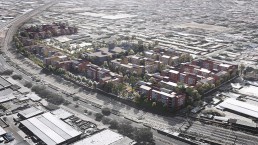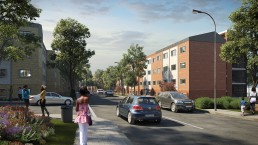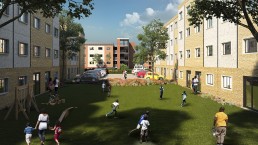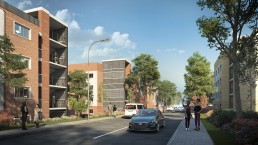The Long Street social housing project in Johannesburg is designed to foster a community space for families in an area previously filled with industrial-oriented buildings. Located in Jeppe near the George Goch Train Station, the project consists of 1336 social housing units spread over six land parcels.
The masterplan for the project preserves the existing roads and trees. It builds them into an urban precinct gated at two entry points with unrestricted freedom of movement between the individual five-storey blocks, a future school, the park, the playground and the landscaped courtyards. As it was previously a brownfield site some of the buildings with heritage status are to be re-purposed and converted to accommodate residential units, while still preserving heritage value facades.
Optimal efficiencies drive the development's layout and design, yet the focus is placed in investment on features that have the most impact and value for future residents.
There are four different unit typologies ranging from 32- 44 sqm catering mainly for families seeking affordable living space in the inner-city. Each unit is provided with solar water heating and utilises fundamental thermal and energy principles to enhance performance and comfort for residents.
Material choice was primarily informed by the need to create robust and durable low-maintenance facades. As such, face-brick, concrete panels and breezeblocks are the primary construction materials. However design details have been included that create a better architectural aesthetic plus provide an identity for the individual blocks and assist with wayfinding. Different palettes of face-brick are applied to each land parcel, precast concrete façade detail panels will be inserted into the face-brick facades, and a variety of breezeblock patterns will be applied on staircases and walkways.
The intention is that community members will do the concrete precasting on site to contribute to community job creation.
| Client | JOSHCO |
| Turnkey Consortium | AfriBiz Invest |
| Project Managers | Blue IQ |
| Development Managers | DDT |
| Landscape Architect | Cornelia King |




